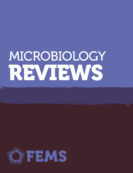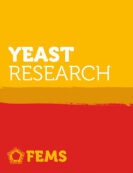FEMS Yeast Research Poster Prize: Maria Gorczyca
We send our congratulations to Maria Gorczyca, who won the best poster prize at 47th Annual Conference on Yeasts in Slovakia. This award is sponsored by our journal FEMS Yeast Research.
Read our interview with Maria about her research below:
What is your current position, and what was your scientific journey to get there?
I’m a PhD Student at the Department of Biotechnology and Food Microbiology at Poznań University of Life Sciences (Poland) supervised by Ewelina Celinska. Our research group is interested in Yarrowia lipolytica’s secretion of heterologous proteins, and my PhD subject focuses on the characterization of transcription factors (TFs) in Yarrowia for recombinant protein production and stress resistance. The project is run in collaboration with Jean-Marc Nicaud from BimLip INRAE (France). Beforehand I completed my Bachelor’s and Master’s degrees at the same University, working with yeast, as well. I also spent half a year internship in Agro-Bio Tech at Liege University (Belgium) in Patrick Fickers’ lab, working with bioreactors and in molecular biology.”
Could you describe the research your poster covered?
During the ACY47 conference in Smolenice, I presented my research on selected TFs from the set of over 100 that I’m investigating. The aim is to examine the implication of these TFs in recombinant protein synthesis and stress resistance in Y. lipolytica. Some of the studied TFs genes are unknown or have only a putative function assigned, based on homology search. After the high-throughput screening, I use a response surface methodology to evaluate the impact of environmental conditions on the yeast’s response. The data are subjected to statistical modeling, to accurately define which conditions reveal the individual TF’s-driven phenotype. What is really interesting, is that certain TFs act as universal protein production enhancers or suppressors, while the others show condition-dependent phenotype. The findings bring us closer to understanding the roles and functions of the genes in Y. lipolytica.”
What do you hope to focus your research on in the future?
In the nearest future, I’ll continue the research on the TFs by going more in-depth into this topic. To gain a better understanding of the gene’s functions, I intend to generate a series of recombinant strains, mutated in the given TFs locus. Thanks to the well-equipped Pilot Plant facility in my Department, I’ll use steady-state-maintained cells to study the regulomes (the regulatory networks) of the most interesting TFs. I hope to identify TFs that contribute to performance enhancement in the investigated biological process.”
–
We use income from the FEMS Journals to fund grants, awards, and projects, and to support our knowledge sharing events and initiatives. Consider publishing your research with our journals to help the global microbiology community.
All but one of the FEMS journals are fully open access (OA), with one journal, FEMS Microbiology Letters, offering free-to-publish and OA options. Open access is key to supporting the FEMS mission of disseminating high quality research as widely as possible: when high quality, peer reviewed sound science is open access, anyone, anywhere in the world with an internet connection, can read it.








